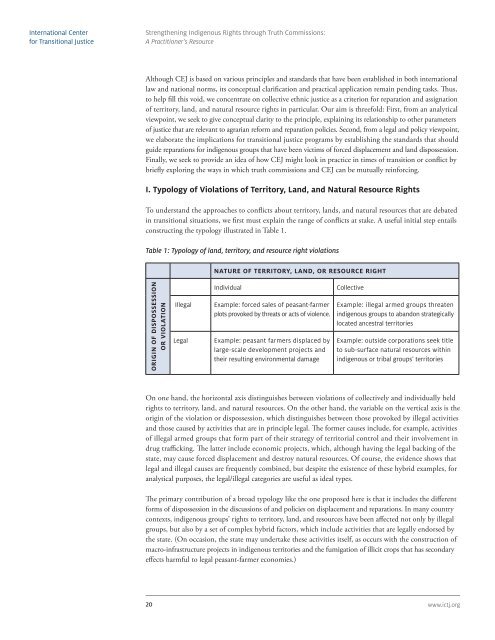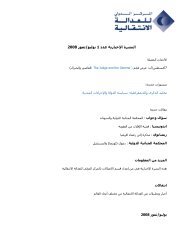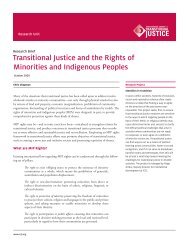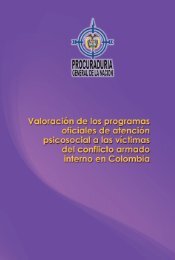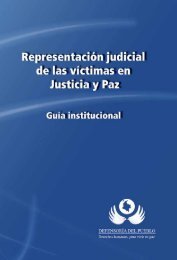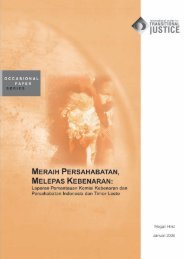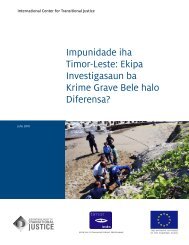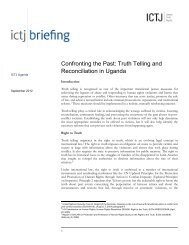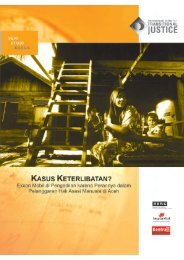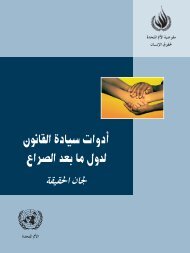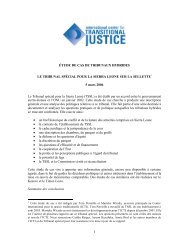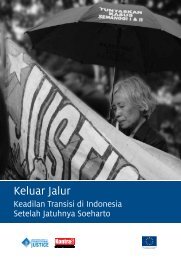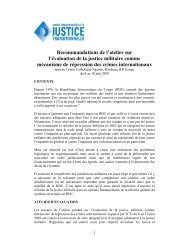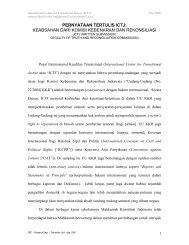Strengthening Indigenous Rights through Truth Commissions: A ...
Strengthening Indigenous Rights through Truth Commissions: A ...
Strengthening Indigenous Rights through Truth Commissions: A ...
- No tags were found...
You also want an ePaper? Increase the reach of your titles
YUMPU automatically turns print PDFs into web optimized ePapers that Google loves.
International Centerfor Transitional Justice<strong>Strengthening</strong> <strong>Indigenous</strong> <strong>Rights</strong> <strong>through</strong> <strong>Truth</strong> <strong>Commissions</strong>:A Practitioner’s ResourceAlthough CEJ is based on various principles and standards that have been established in both internationallaw and national norms, its conceptual clarification and practical application remain pending tasks. Thus,to help fill this void, we concentrate on collective ethnic justice as a criterion for reparation and assignationof territory, land, and natural resource rights in particular. Our aim is threefold: First, from an analyticalviewpoint, we seek to give conceptual clarity to the principle, explaining its relationship to other parametersof justice that are relevant to agrarian reform and reparation policies. Second, from a legal and policy viewpoint,we elaborate the implications for transitional justice programs by establishing the standards that shouldguide reparations for indigenous groups that have been victims of forced displacement and land dispossession.Finally, we seek to provide an idea of how CEJ might look in practice in times of transition or conflict bybriefly exploring the ways in which truth commissions and CEJ can be mutually reinforcing.I. Typology of Violations of Territory, Land, and Natural Resource <strong>Rights</strong>To understand the approaches to conflicts about territory, lands, and natural resources that are debatedin transitional situations, we first must explain the range of conflicts at stake. A useful initial step entailsconstructing the typology illustrated in Table 1.Table 1: Typology of land, territory, and resource right violationsNATURE OF TERRITORY, LAND, OR RESOURCE RIGHTORIGIN OF DISPOSSESSIONOR VIOLATIONIllegalLegalIndividualExample: forced sales of peasant-farmerplots provoked by threats or acts of violence.Example: peasant farmers displaced bylarge-scale development projects andtheir resulting environmental damageCollectiveExample: illegal armed groups threatenindigenous groups to abandon strategicallylocated ancestral territoriesExample: outside corporations seek titleto sub-surface natural resources withinindigenous or tribal groups’ territoriesOn one hand, the horizontal axis distinguishes between violations of collectively and individually heldrights to territory, land, and natural resources. On the other hand, the variable on the vertical axis is theorigin of the violation or dispossession, which distinguishes between those provoked by illegal activitiesand those caused by activities that are in principle legal. The former causes include, for example, activitiesof illegal armed groups that form part of their strategy of territorial control and their involvement indrug trafficking. The latter include economic projects, which, although having the legal backing of thestate, may cause forced displacement and destroy natural resources. Of course, the evidence shows thatlegal and illegal causes are frequently combined, but despite the existence of these hybrid examples, foranalytical purposes, the legal/illegal categories are useful as ideal types.The primary contribution of a broad typology like the one proposed here is that it includes the differentforms of dispossession in the discussions of and policies on displacement and reparations. In many countrycontexts, indigenous groups’ rights to territory, land, and resources have been affected not only by illegalgroups, but also by a set of complex hybrid factors, which include activities that are legally endorsed bythe state. (On occasion, the state may undertake these activities itself, as occurs with the construction ofmacro-infrastructure projects in indigenous territories and the fumigation of illicit crops that has secondaryeffects harmful to legal peasant-farmer economies.)20www.ictj.org


